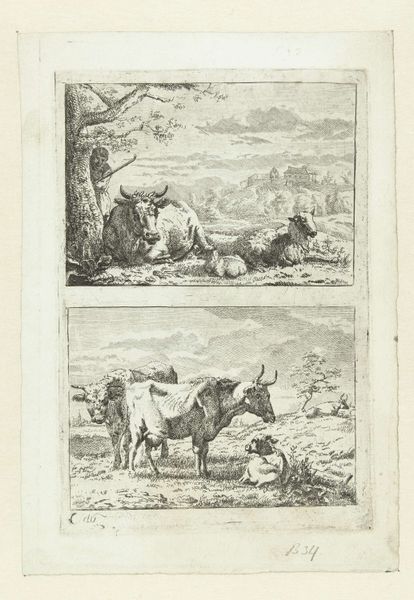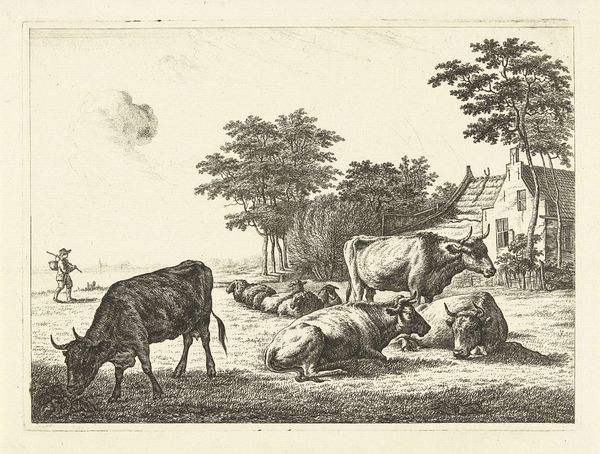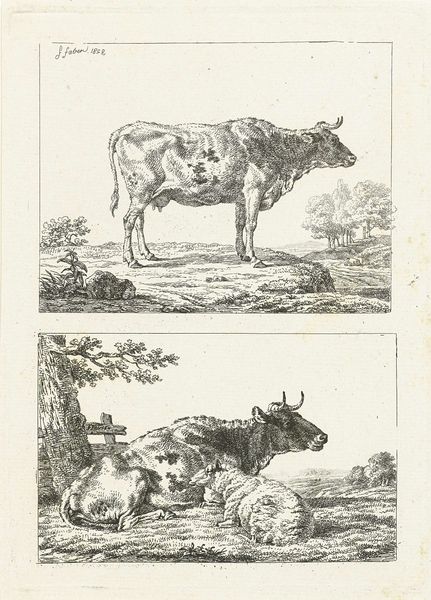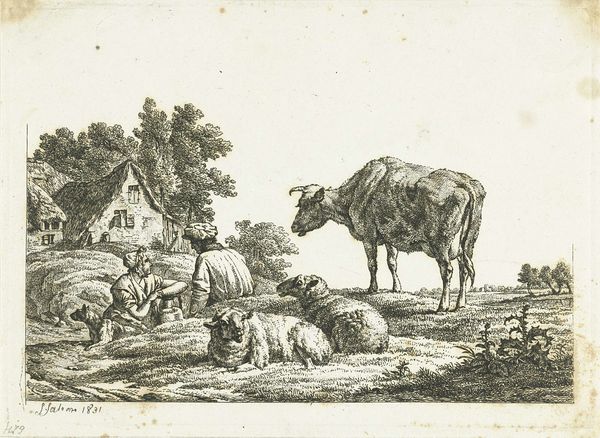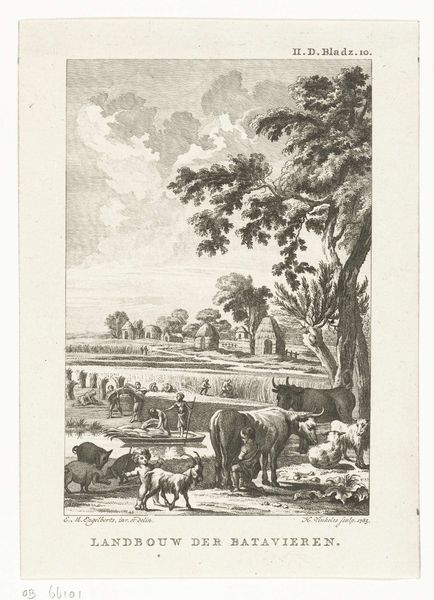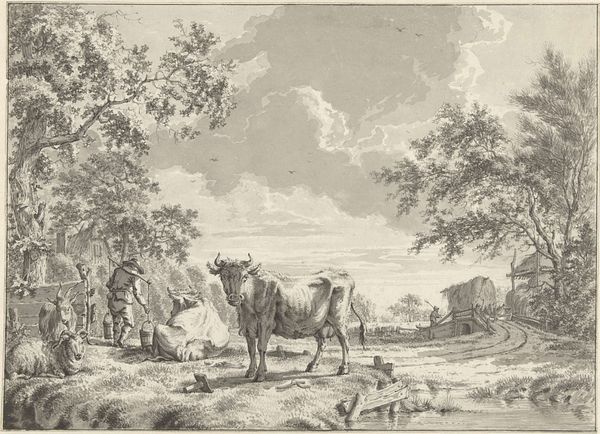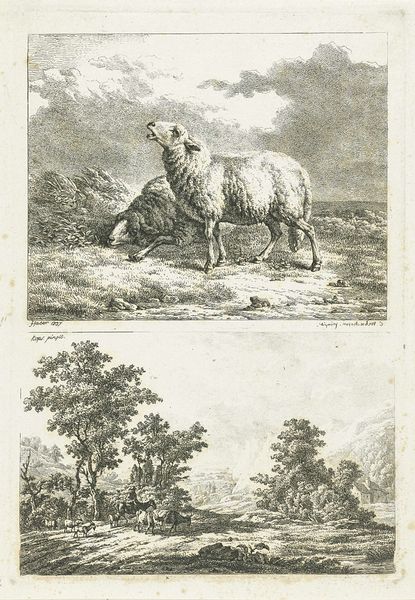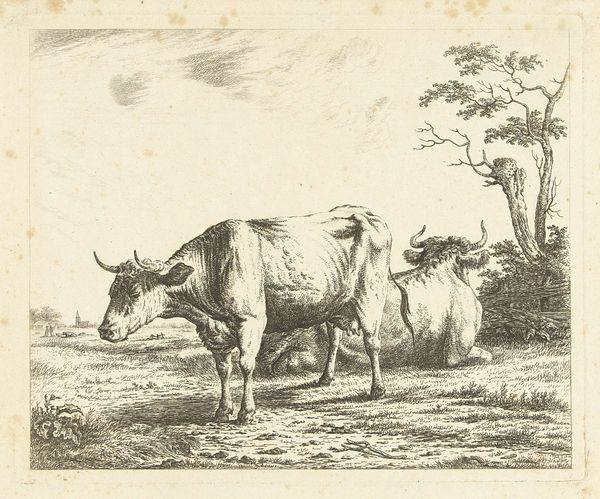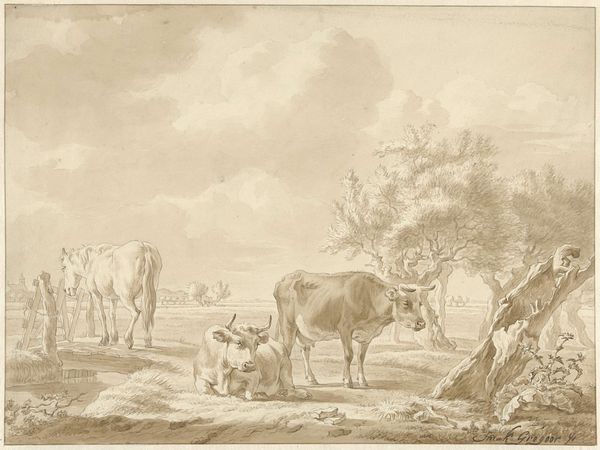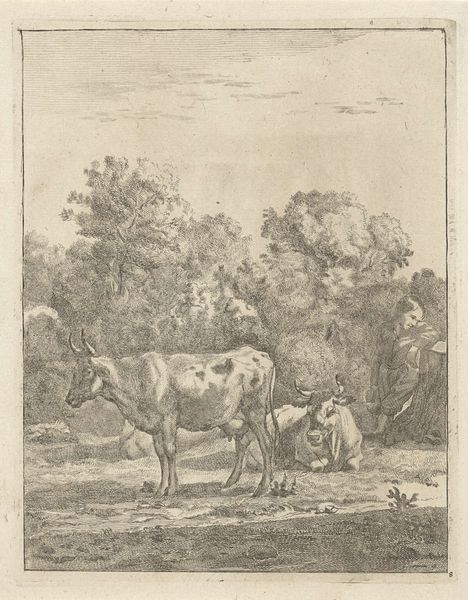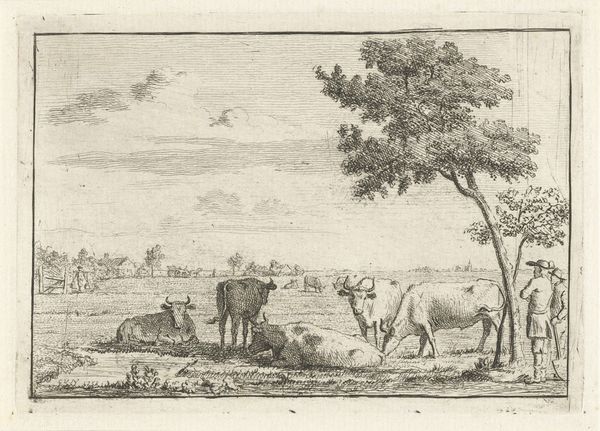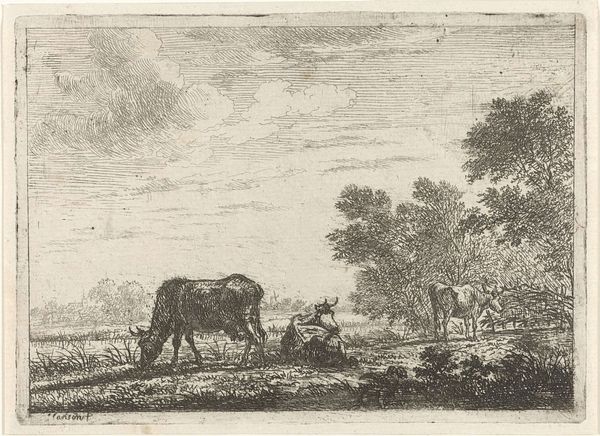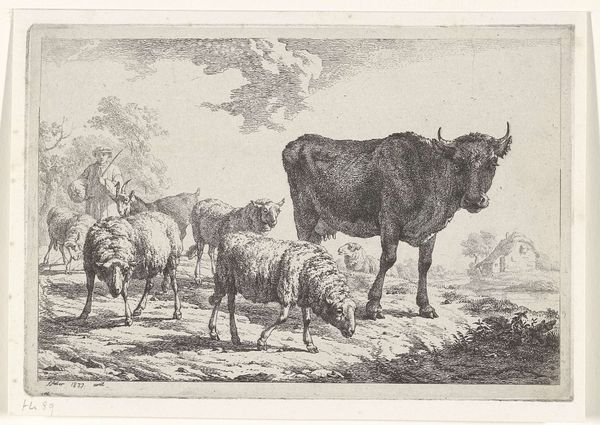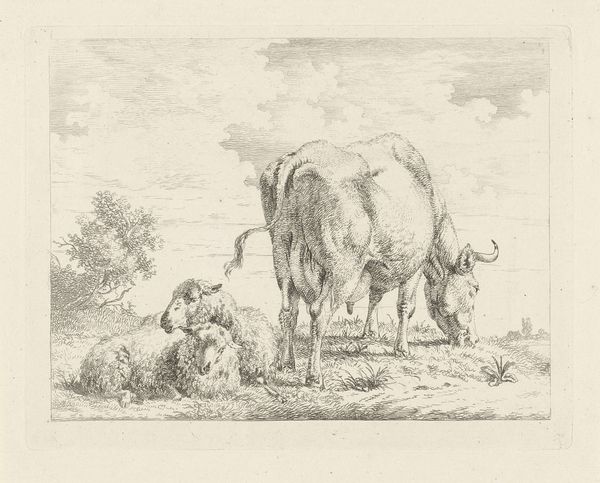
#
quirky sketch
#
pen sketch
#
sketch book
#
personal sketchbook
#
sketchwork
#
pen-ink sketch
#
pen work
#
sketchbook drawing
#
storyboard and sketchbook work
#
sketchbook art
Dimensions: height 252 mm, width 181 mm
Copyright: Rijks Museum: Open Domain
Editor: So, this is "Landschap en stier" by Frédéric Théodore Faber, made in 1807. It's a pen and ink sketch, a kind of double landscape really. I'm struck by how different the moods are between the two scenes, the top one is serene, the bottom almost feels... oppressed, maybe? How do you interpret this work? Curator: That's a very insightful observation! What I find compelling is the juxtaposition of idyllic pastoral scenes with a more complicated depiction of labor and the natural world. The artist places the serene and the strenuous in the same plane, therefore he might want us to consider both in one cultural context. Editor: So, you're saying it's less about nature, and more about society's relationship to it? Curator: Precisely. Consider the period—the early 19th century saw increasing industrialization impacting rural life. Could the contrast represent a tension between romanticized visions of nature and the reality of agricultural labor? Notice the lower scene and how the animal is bound to the tree? Are we witnessing not just livestock, but perhaps the subjugation of the natural world? Editor: It's like Faber is prefiguring later critiques of capitalism and its impact on animals. Curator: Exactly. It encourages us to confront uncomfortable questions about exploitation and control inherent in our relationship with the environment. How do you think class and social hierarchy might factor into these contrasting landscapes? Editor: Well, the top one does look like the kind of place only the wealthy could really enjoy, whereas the bottom looks like the reality for most people. Curator: It gives us much to think about. Editor: I agree, seeing this as more than just pretty landscapes completely changes the work's meaning for me. Curator: Indeed. It showcases the potential of art to not just reflect, but to critique and question the power dynamics shaping our world.
Comments
No comments
Be the first to comment and join the conversation on the ultimate creative platform.
